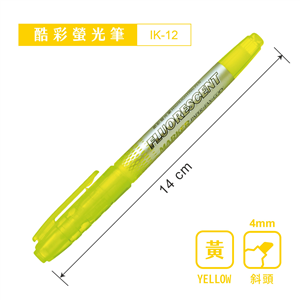
作者:Chris Merkelbach、Angelika Loo、Tushar Chaudhuri等
 1收藏
1收藏

 二手徵求有驚喜
二手徵求有驚喜
定價:NT$ 450
優惠價:88 折,NT$ 396
運送方式:超商取貨、宅配取貨
銷售地區:全球
訂購後,立即為您進貨




This book presents a unique manifestation of a scholarly discourse related to the CEFR in the East Asian region.
In the 21st century, multiculturalism and multilingualism form highly complex issues that are addressed around the globe by educators, researchers, and politicians alike. In this context, the Common European Framework of Reference for Languages (CEFR) remains one of the most ambitious examples of language policy. More than a simple linguistic policy, it also helps foreign language learners to construct their linguistic and cultural identity. The term multilingualism as used by the EU covers that of plurilingualism, which highlights the communicative value of any given language, thereby encouraging persons living in Europe to develop their communicative competence in a plurilingual Europe.
As for the situation in East Asia, many educational institutions and even government agencies have adopted the CEFR over the last decade for various reasons. However, doubts exist about whether this move to implement a reliable language proficiency assessment was well researched or merely blindly adopted due to political motivations. A part of the CEFR is based on the ideal of a plurilingual Europe and the fact that most Europeans do command a certain level of language competence in several languages and that they can oftentimes build upon it when learning another European language. No doubt, East Asian societies are multilingual societies as well. Besides their mother tongue, the majority of people living in this region speak the standard variety of their respective country. However, does that mean that native speakers of two or more Asian languages have an advantage when learning European languages?
Foreign language educators from Europe and the East Asian region are joined in this project, engaging in very stimulating discussions and uncovering the vast potential of the CEFR as a catalyst in pluricultural and plurilingual education facing the new millennium.
作者簡介:
Chris Merkelbach / Technische Universität Berlin
Angelika Loo / Hong Kong Baptist University
Tushar Chaudhuri / Hong Kong Baptist University
Philippe Valax / Wenzao Ursuline College of Languages, Taiwan
Shien Sakai / Chiba University of Commerce, Japan
Jörg-Alexander Parchwitz / Wenzao Ursuline College of Languages, Taiwan
Louisa Hsiang-I Lin / National Taiwan University
Vassilis Vagios / National Taiwan University
Jorge Mojarro Romero / Instituto Cervantes de Manila
Fabrizio Grasselli / Dante Alighieri Society Tokyo
(By order of the article)
退換貨說明:
會員均享有10天的商品猶豫期(含例假日)。若您欲辦理退換貨,請於取得該商品10日內寄回。
辦理退換貨時,請保持商品全新狀態與完整包裝(商品本身、贈品、贈票、附件、內外包裝、保證書、隨貨文件等)一併寄回。若退回商品無法回復原狀者,可能影響退換貨權利之行使或須負擔部分費用。
訂購本商品前請務必詳閱退換貨原則。影片僅供參考,實物可能因再版或再刷而有差異
作者:Chris Merkelbach、Angelika Loo、Tushar Chaudhuri等
 1收藏
1收藏

 二手徵求有驚喜
二手徵求有驚喜
優惠價: 88 折, NT$ 396 NT$ 450
運送方式:超商取貨、宅配取貨
銷售地區:全球
訂購後,立即為您進貨
This book presents a unique manifestation of a scholarly discourse related to the CEFR in the East Asian region.
In the 21st century, multiculturalism and multilingualism form highly complex issues that are addressed around the globe by educators, researchers, and politicians alike. In this context, the Common European Framework of Reference for Languages (CEFR) remains one of the most ambitious examples of language policy. More than a simple linguistic policy, it also helps foreign language learners to construct their linguistic and cultural identity. The term multilingualism as used by the EU covers that of plurilingualism, which highlights the communicative value of any given language, thereby encouraging persons living in Europe to develop their communicative competence in a plurilingual Europe.
As for the situation in East Asia, many educational institutions and even government agencies have adopted the CEFR over the last decade for various reasons. However, doubts exist about whether this move to implement a reliable language proficiency assessment was well researched or merely blindly adopted due to political motivations. A part of the CEFR is based on the ideal of a plurilingual Europe and the fact that most Europeans do command a certain level of language competence in several languages and that they can oftentimes build upon it when learning another European language. No doubt, East Asian societies are multilingual societies as well. Besides their mother tongue, the majority of people living in this region speak the standard variety of their respective country. However, does that mean that native speakers of two or more Asian languages have an advantage when learning European languages?
Foreign language educators from Europe and the East Asian region are joined in this project, engaging in very stimulating discussions and uncovering the vast potential of the CEFR as a catalyst in pluricultural and plurilingual education facing the new millennium.
作者簡介:
Chris Merkelbach / Technische Universität Berlin
Angelika Loo / Hong Kong Baptist University
Tushar Chaudhuri / Hong Kong Baptist University
Philippe Valax / Wenzao Ursuline College of Languages, Taiwan
Shien Sakai / Chiba University of Commerce, Japan
Jörg-Alexander Parchwitz / Wenzao Ursuline College of Languages, Taiwan
Louisa Hsiang-I Lin / National Taiwan University
Vassilis Vagios / National Taiwan University
Jorge Mojarro Romero / Instituto Cervantes de Manila
Fabrizio Grasselli / Dante Alighieri Society Tokyo
(By order of the article)
退換貨說明:
會員均享有10天的商品猶豫期(含例假日)。若您欲辦理退換貨,請於取得該商品10日內寄回。
辦理退換貨時,請保持商品全新狀態與完整包裝(商品本身、贈品、贈票、附件、內外包裝、保證書、隨貨文件等)一併寄回。若退回商品無法回復原狀者,可能影響退換貨權利之行使或須負擔部分費用。
訂購本商品前請務必詳閱退換貨原則。
請在手機上開啟Line應用程式,點選搜尋欄位旁的掃描圖示
即可掃描此ORcode

